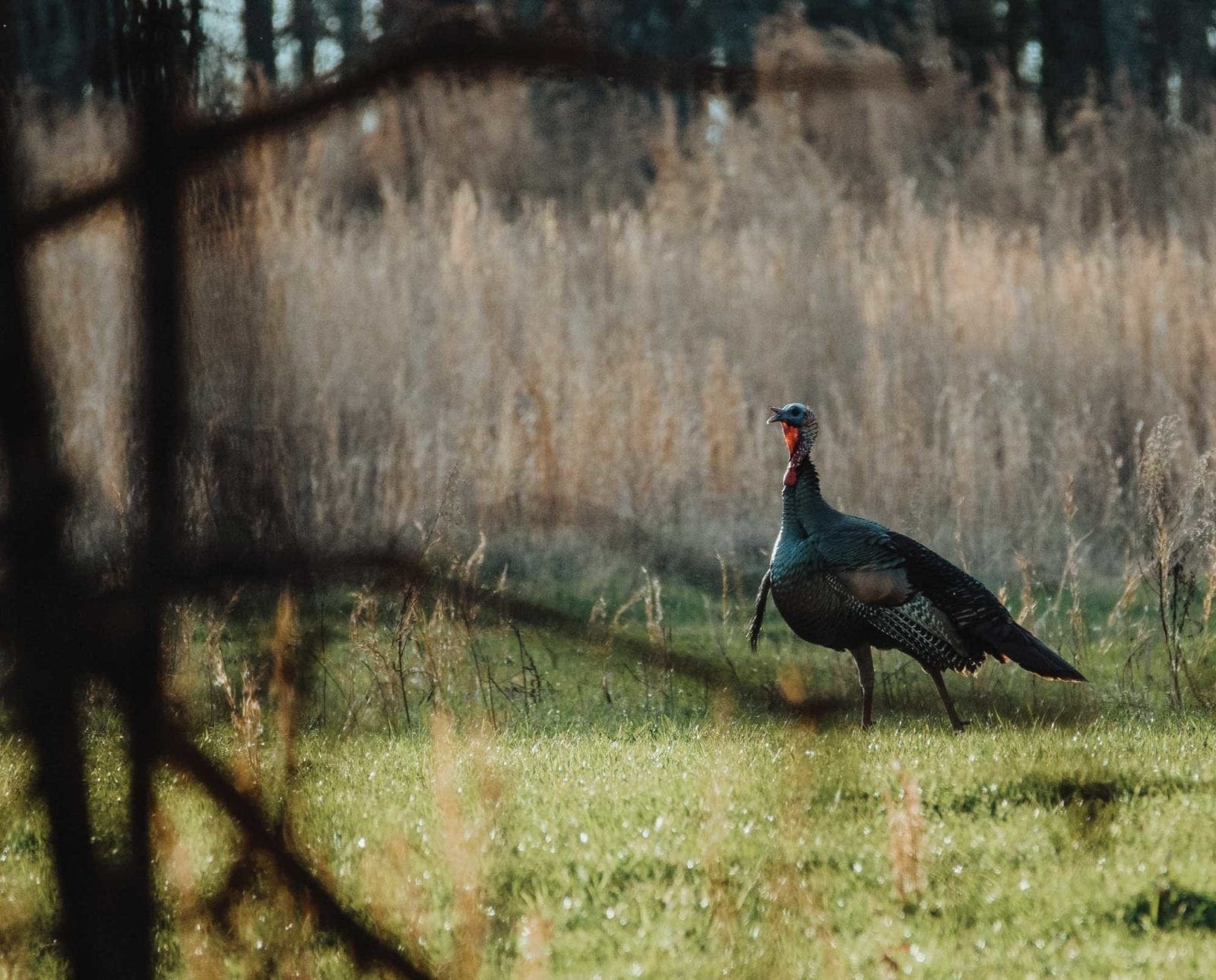Home » Turkey Hunting » How to Kill a Silent Turkey
How to Kill a Silent Turkey

A.J. DeRosa, founder of Project Upland, is a New England…
Explore a less traditional but effective approach to hunting turkeys that are silent during the spring season
It’s tough to put a finger on what turkeys are doing, want to do, and why they are behaving certain ways. Many turkey hunters have experienced an unusual season this year with birds that are both silent and still flocked up. By no means am I a turkey biologist and I can only muse about why this is the case. Climate change, a bad season of winter feed, just a hiccup in the turkey world? Who knows.
What I can gather is that the places we are hearing about with silent turkeys have birds that are still in large flocks. That, for the most part, means that the males are yet to break out and travel far and wide looking for one more mate to finish the breeding season.Those birds are desperate (sometimes), more vocal, and looking for just about any piece of property that has even the slightest proximity to good turkey habitat.
Turkeys also have certain triggers that research has pinpointed on when they are most vocal.
When and why turkeys gobble
A few years ago NWTF reported on a study done by Dave Godwin, turkey project leader for Mississippi Wildlife, Fisheries and Parks, and Derek Colbert, graduate student at the University of Georgia. The idea was to pin down when and why turkeys gobble during the season. Here are some key points
- More jakes means more gobbling
- Gobbling is at its highest in winds ranging from 3-6 mph, and decreases significantly at 12 mph or higher
- Peak gobbling occurred in temperatures between 60-69 degrees
- Low pressure in the weather translated to less gobbling, peaking at 29.9-30.2 inches
It’s important to note the factor of temperature based on the region. Although we’ve been unable to find reports focused on northern states, you must consider that temperature ranges could vary based on wild turkey acclimation.
How to hunt silent turkeys
Sure, part of the allure of turkey hunting is to get out there and interact with the birds. The idea of calling back and forth is both exciting and an anticipated part of our spring seasons. But this silence can often call for much more patience, scouting, and plain old woodsmanship.
Think of turkeys as whitetail deer in these realms. The first and foremost approach is to understand the travel routes of the turkeys you are hunting. Trail cameras are often the fastest way to pin down travel routes and you should be mindful of how turkeys move across the landscape. They will avoid thick cover, walk trails or “strutting zones” and have travel routes between fields — also in relation to roosting areas.
Once we figure out what the patterns look like we can set up for ambush. This will take patience and for some of us all those chips were spent hunting deer during the past season. But if you can come to terms with it, this is the way to go on these silent days. The question that remains is should you call at all?
The issue with silent birds is not that they don’t necessarily want to come in but that they may come in silent. Sounding off a call occasionally reveals your position, and sometimes the reality of a turkey’s uncanny eyesight results in us getting spotted first rather than them. Ground blinds can help, but many still choose to pick a tree to sit at (myself included). Our own silence is about the last advantage we can get on days of silent turkeys.
I hate to say it, but the days I’ve been most successful in these scenarios are the days I do not call at all. And I would be misleading you if I did not point out that more often than not, I will abandon silent days in hopes of a future day of gobbling interaction. Sure, you can try the call every so often and wait, but more often than not — whether hen or tom — someone will surprise you in your setup and probably before an opportunity presents itself.
This approach is really simple, almost crude in traditional turkey hunting methodology. Turkeys, like many animals, are creatures of habit. With a little bit of scouting, reading of the lay of the land, and most of all, patience, you can turn those silent days into successful ones. Just don’t expect to be running through the woods calling to a lonely tom pulled from a county away. If you can manage those expectations, then by all means, hunt these silent birds.
A.J. DeRosa, founder of Project Upland, is a New England native with over 35 years of hunting experience across three continents. His passion for upland birds and side-by-side shotguns has taken him around the world, uncovering the stories of people and places connected to the uplands. First published in 2004, he wrote The Urban Deer Complex in 2014 and soon discovered a love for filmmaking, which led to the award-winning Project Upland film series. A.J.'s dedication to wildlife drives his advocacy for conservation policy and habitat funding at both federal and state levels. He serves as Vice Chair of the New Hampshire Fish & Game Commission, giving back to his community. You can often find A.J. and his Wirehaired Pointing Griffon, Grim, hunting in the mountains of New England—or wherever the birds lead them.




I don’t enjoy hunting silent birds. If they didn’t gobble I wouldn’t even hunt them. Each year we see fewer birds and less gobbling. If this keeps up I will be fishing and hunti g mushrooms.